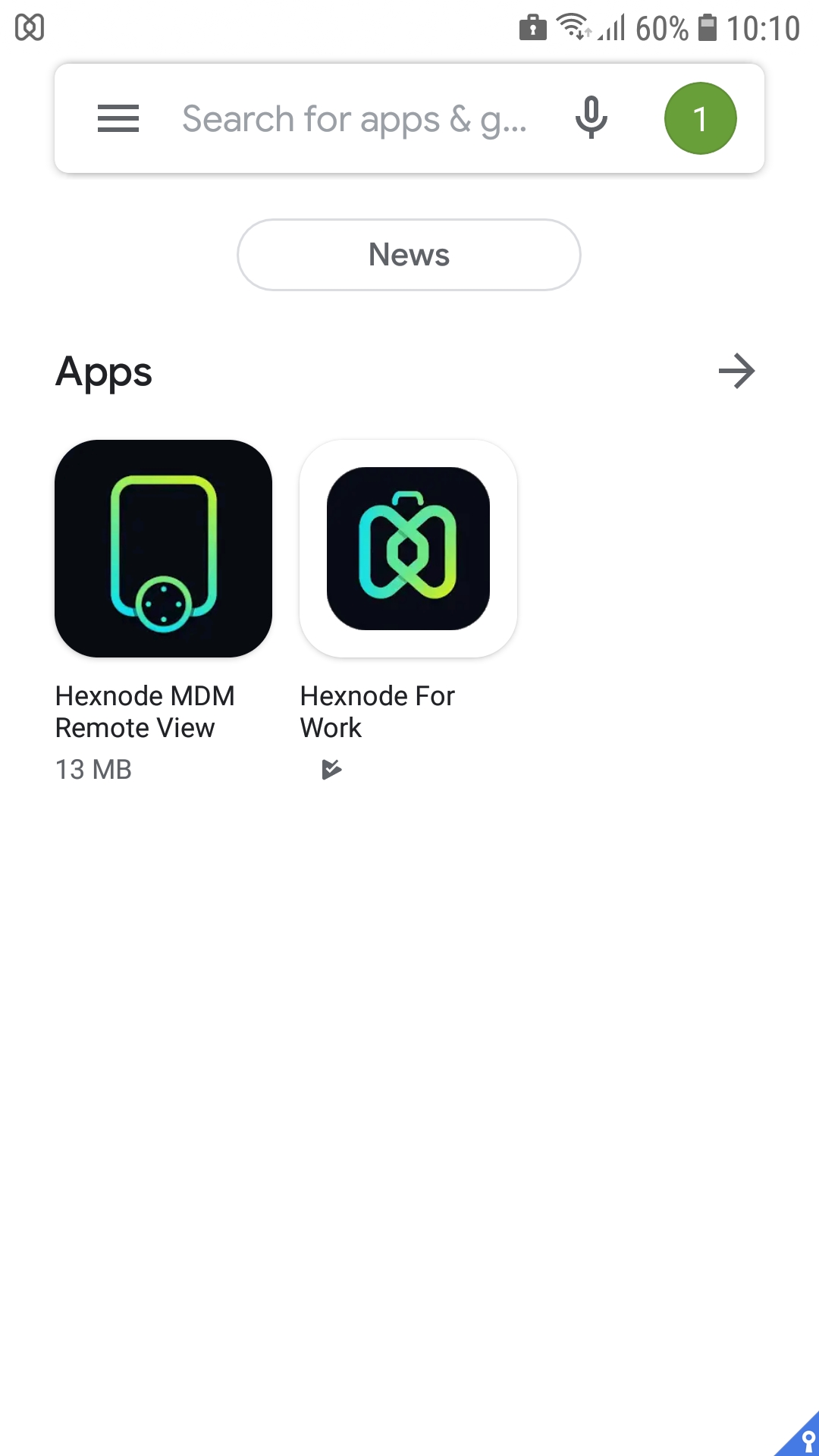Category filter
How to Customize Play Store with Custom Apps
Hexnode allows users to customize Play for Work with specifically chosen play store apps, custom build app clusters and pages. Here’s the series of steps you’ll need to follow to get the app added to the store.
- Approve and add apps to the apps list.
- Design a layout for the Play Store with custom apps.
Approve and Add Apps to the List
To add a Managed Google app to the app list,
- Go to the Apps tab.
- From + Add Apps, select Managed Google Apps.
- Browse the work apps you need to add to your private app store or directly to the device.
- Click on Approve.
- Another popup will show the permissions required by the app. Click Approve to finalize.
- Before saving, get through the Approval Settings and Notifications tabs. You can edit these settings later from Approval Preferences which is available on the app details page.
- From the Approval Settings tab, select Keep approved when app requests new permissions to allow users to update the app even if the update requires any additional permission. Or select Revoke app approval when this app requests new permissions to remove the app from the store if the update requires newer permissions.
- From the Notifications tab, add email addresses to receive notifications when the approved apps request new permissions.
- All approved apps will be added to the app list right away.
You can also publish Private apps privately into Managed Google Play Store.
Design a Layout for the Play Store with custom apps
The store layout consists of pages and clusters. Separate pages can be created for each department (for example), clusters (sections within the pages) can be added to these pages, and apps are added to the clusters.
- Go to the Apps tab and click on the Store Layouts tab.
- On the left panel, select + Add Page.
- Name the page. Set it as a homepage (optional). A home page is the first page displayed when you open the Play Store work app. You should set any one of the pages as the homepage. You can create multiple pages or edit the existing ones.
- Select a page. Under Clusters, click on the + New button to add a new cluster.
- Name the cluster. Use the + Add App button to add apps to the current cluster.
- When you are done, you can save the cluster. You can add multiple clusters per page.
To delete a cluster or clear the apps off a cluster, click on any saved cluster.
- Click on the trash icon on the top to delete the cluster.
- The Remove all button will clear all apps from the cluster.
- The close button (x) on the top will cancel editing the cluster without it being saved.
Create a new App Catalog
App Catalog serves as a storehouse of apps, typically one in alphabetical or systematic order, that can be pushed to the device later through policies.
To create a new app catalog,
- Log in to your Hexnode MDM portal and navigate to the Apps tab.
- Click on App catalogs.
- Click on + New to add a new catalog.
- Add a suitable name and description for the catalog.
- Click on Apps > +Add Apps to add apps of your choice to the catalog.
- Similarly, click on Groups > +Add App Groups to add App Groups to the catalog.
- Hit Save Catalog.
The added catalog would appear in the list.
Push the catalog to the device via policy
To push the newly added app catalog to the device,
- Navigate to Policies > New Policy. You can also choose to continue with an existing policy.
- Go to Android > App Management > App Catalog. Click +Add Catalogs.
- Choose the catalog from the list and click Done.
- Now, associate the policy with the target device by clicking on Policy Targets.
- Choose the targets you wish to associate the policy with and click OK.
- Click Save.
Policy Name– Assign a suitable name for the policy. This field is mandatory.
Description– Provide a brief description of the policy.
The customized Play Store layout for the above policy will look like this:



